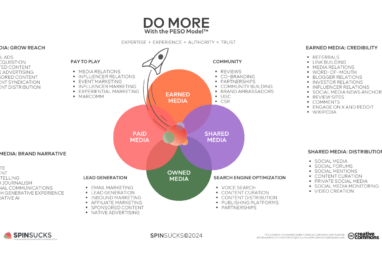Covid-19: Is this the catalyst needed to give public relations leaders their place in the boardroom?
About the author
Vicky Shepherd prepared this article as part of a CIPR Professional PR Diploma submission while studying wtih PR Academy

Almost forty years after James Grunig started his work on the Excellence Theory and made the case that effective organisations must make public relations (PR) a critical management function(1), we still find ourselves defending the importance of the communications directorate within a company’s senior management. Why are we still used as the ‘tail end Charlie’, being the last to be told about new visions, policy and big company news?

The Coronavirus (Covid 19) pandemic has grounded airlines, isolated entire nations and upset financial markets and economies, while the PR industry finds itself on the cusp of a revolution, uniquely positioned to steer senior leaders and their organisations through the ever-changing situation which Covid-19 presents.
Whilst many of us have never worked so hard providing communications and messaging to our colleagues, customers and stakeholders, we have also found our leaders being employed to provide much needed strategic advice to senior management on our customer and stakeholder relationships; thus, enhancing and protecting company reputation.
With our deep insight on our customers and stakeholders could Covid-19 be the catalyst we need to make chief executives and organisations realise the true value of our profession, not just in the tangible communications but in the strategic value we can bring to the boardroom?
Should we have a seat at board level?
James Grunig embarked on his first academic research into the role of public relations in the 1960s with the development of the situational theory of publics, before publishing The Four Models of Public Relations in 1984 with Todd Hunt. This work took him on a journey over the next decade to develop the Excellence Theory which sought to explore how PR could evolve from a tactical craft that broadly focused on publicity and media relations to become a management discipline(2).
The aim of the research was to establish what the value of PR was, and if this could be articulated to an organisation. The Excellence Theory proposed that the value of communication could be determined at four levels, with the first level being that effective organisations must empower PR as a critical management function(3). He went on to claim that ‘public relations involvement in strategic management was the critical characteristic of excellent public relations'(4).
Speaking in 2010, Grunig claimed that his Excellence Theory is still relevant today. He re-iterated that if PR is to be excellent then it has to have a strategic managerial role within an organisation, and that it should be part of the strategic decision-making. He went so far as to say this is the most important finding from the Excellence Study(5).
One might even wonder if Grunig had a crystal ball when developing the fourth level. This stated that organisations need to operate at a societal level and recognise their impact on the welfare and interest of its stakeholders as well as the organisation itself. They cannot be effective unless they are socially responsible(6). Did he foresee a global pandemic in 2020 when PR practitioners would be tasked with navigating Chief Executive Officers through complex customer and stakeholder needs using the very insight that we’ve been craving to share for years?
You don’t need to look far to find critics of Grunig’s theory, and many make a strong case for why we shouldn’t see ourselves in the boardroom. Derina R. Holtzhausen claims there is a danger that if PR professionals are at the top of an organisation there is a real possibility that the practitioner becomes so co-opted into the power structure that it becomes difficult to be the activist. She argues the case that moving PR practitioners from being in senior management positions makes them organisational activists, working from within to create opportunities for dissent, and possibilities for change(7).
The European Communications Monitor in 2009 unsurprisingly reported that the more senior a PR leader was in the organisation the more influence they were likely to have. ‘If part of the “dominant coalition” of company decision makers, then PR is likely to serve a key strategic role’(8).
This is backed up by Anne Gregory in her book Planning and Managing Public Relations Campaigns. She states that in organisations where PR is taken seriously and proactively, it is normal that the senior practitioner holds a major position in the organisation(9).
Why then, if so much of the academic thinking says we should be at the heart of the company decision making, is this not the case? The 2019/20 FTSE 100 Group Director of Corporate Communications/Affairs Survey shows that the number of corporate communications directors who are formal members of their executive committee is still only 51%(10).
The value of insight
Thomas Carlyle said ‘Nothing is more terrible than activity without insight'(11).
In a world that has been turned upside down since March last year, and all normal processes have flown out of the window, now is our time to step forward and help guide our senior leaders through the Covid-19 fog and update our customers and stakeholders on developments.
According to the Edelman Trust Barometer Special Report: Brand Trust and Coronavirus, never before has our communication been more important. Of a survey conducted across twelve countries affected by Coronavirus(12), 63% of respondents said they would like their employer to share information about Covid-19 at least daily and in the UK 61% said that hearing from companies about what they were doing in response to the pandemic was comforting and reassuring.
Knowing our customer and stakeholder needs and values is a valuable insight that PR professionals can take to senior management. Like any well-run school parents’ evening, staff don’t just sit and talk at the parents, but engage with the family asking parents how they believe their child is doing. It’s a conversation. We too must learn to communicate both ways, the more we know about our stakeholders, the better our communications will be. There are so many methods of gaining insights such as using social media listening tools, press cutting/broadcast analysis, regular stakeholder and customer surveys and many other online tools available to help companies understand what people are talking about. For those working to a tight budget, it doesn’t have to cost a penny either. In a world of google analytics and search engines such as ‘answerthepublic.com’, you have a world of free insight at your fingertips. Data is crucial in enabling us to understand and identify the behaviours of our customers and stakeholders, giving us a deeper insight.
At a time when Covid-19 guidelines are changing daily and are increasingly complicated, local lockdown measures make strategic decision making harder by the day. The ability to approach our executive committees and chief executive officers with hard insight on our customer and stakeholder priorities makes us an invaluable asset to the Board. The more accurate the information we can provide to our leadership, the more invaluable our counsel and ability to brief becomes, further justifying our seat at the top table.
Covid-19 – the catalyst?
The 2020 Covid-19 pandemic may have caused the greatest global disruption that many of us have seen in our lifetime, and destroyed many businesses, but lack of work cannot be said for those of us involved in corporate PR. Research by the Institute for Public Relations and Peppercomm of 300 executives and senior leaders in March 2020 found that ‘now, more than ever’, business leaders are relying on the expertise of the communications team as an essential resource to help deal with the pandemic. 81% of those surveyed said the communications function was ‘important’ or ‘very important’ to their company’s Covid-19 response(13).
At times over the past year the Covid-19 messaging and guidance has changed daily, and even several times within a 24-hour period. The need to react at speed has been paramount in communicating these updates both internally and externally, quickly and clearly. No one is better equipped to react under pressure than an experienced communications specialist who is all too accustomed with firefighting a full inbox of urgent press enquiries at 5pm on a Friday afternoon.
Ensuring timely and accurate information has never been more important, with stakeholders needing to know what a company is currently doing to help them. Delta Airlines, the American carrier, really understood its customers concerns when the Covid-19 national lockdowns started. Not only did it work to reassure customers by introducing an industry leading cleanliness standard, it then set about alleviating customers’ concerns about the financial effects of changing their booking, issuing clear reassurances in the press and social media. This tweet demonstrates the company grasped what’s important, and then communicated in a timely manner(14).
We understand you have questions. We are waiving change fees broadly, but above all, rest assured that the value of your ticket won’t be lost if you need to make a change. Learn more about our simplified waivers when making changes to your upcoming flight. https://t.co/l4hT2mElzW
— Delta (@Delta) March 19, 2020
Perhaps for the first time we have become the trusted counsel to the chief executive, who has valued our ability to look broadly across the many directorates and see the bigger picture. We have taken to the decision-making table our valuable insight of what our customers and stakeholders outside the organisation need at this very moment in time, as well as keeping remote colleagues fully informed.
Whilst our company IT and HR directors have looked at what needs to be done to enable staff to work at home, they are purely focused on their own tasks. We are experts who have a clear vision across all functions, putting a human perspective on what actions the organisation should be undertaking to look after our staff, their jobs and the wider community around us.
Haven’t we demonstrated our value over the past year, not just communicating key messages, but helping organisations navigate their way through the Covid-19 minefield at a strategic level?
Covid-19 has created an awareness of organisational responsibilities, be that in protecting jobs, the environment or even just being understanding to parents who are home schooling whilst juggling the pressures of work. They want to know how an organisation fits into the local community and what proactive steps are being taken to achieve what is expected of them. The pandemic has demanded action rarely undertaken by companies before, and these new expectations will remain long after the pandemic has moved on.
This pandemic has been an opportunity to show our worth throughout the organisation at all levels, particularly at Board level where our real insights and direction have enabled timely decision making, swift communication and the management of relationships with stakeholders and employees.
Is this finally the opportunity for change?
At last we’ve been given the opportunity to clearly prove our worth, and in the vast majority of cases we’ve done this with professional aplomb. Moving forwards to when the new normal emerges I challenge organisations to ignore at their peril the value of communications professionals. We’ve been at top table throughout 2020 and have demonstrated we are as valuable as other management functions. PR is a management function in itself and James Grunig should feel vindicated!
A seat should remain open for us in the boardroom, and our directors must be members of the executive team. In the words of Martin Luther King ‘I have a dream……..’ that moving forwards the evolution of the communications function in the pandemic will mean that our insights will be respected, discussed and absorbed into future company policy. Our leaders will sit as a peer in the boardroom alongside our HR, finance and operations colleagues and our counsel will be heard and valued.
Endnotes:
1 2010. James Grunig and Larissa A. Grunig. The Third Annual Grunig Lecture Series: Public Relations Excellence 2010. Delivered at the PRSA International Conference in 2010. Available via the Institute for Public Relations: http://www.instituteforpr.org/wp-content/uploads/Third-Grunig-Lecture-October-17-2010-Transcript.pdf
2 2018. Wadds.co.uk. A Critical Review of Excellence Theory in an Era of Digital Communications.
3 2010. James Grunig and Larissa A. Grunig. The Third Annual Grunig Lecture Series: Public Relations Excellence 2010. Delivered at the PRSA International Conference in 2010. Available via the Institute for Public Relations: http://www.instituteforpr.org/wp-content/uploads/Third-Grunig-Lecture-October-17-2010-Transcript.pdf
4 2008. James E. Grunig. University of Maryland. Excellence Theory in Public Relations.
5 2010. James Grunig and Larissa A. Grunig. The Third Annual Grunig Lecture Series: Public Relations Excellence 2010. Delivered at the PRSA International Conference in 2010. Available via the Institute for Public Relations: http://www.instituteforpr.org/wp-content/uploads/Third-Grunig-Lecture-October-17-2010-Transcript.pdf
6 2018. Wadds.co.uk. A Critical Review of Excellence Theory in an Era of Digital Communications.
7 2002. Derina. R. Holtzhausen. Journal of Public Relations Research. Resistance From the Margins: The Postmodern Public Relations Practitioner as Organisational Activist.
8 2009. https://www.communicationmonitor.eu
9 2015. Anne Gregory. Planning and Managing Public Relations Campaigns: A Strategic Approach.
10 2019/20. Watson/Helsby. FTSE 100 Group Director of Corporate Communications/Affairs
11 https://highperformancedevelopment.co.uk/nothing-is-more-terrible-than-activity-without-insight/
12 2020. Edelman Trust Barometer 2020. Special report: Trust and Coronavirus.
13 2020. Instituteforpr.org/coronavirus-covid-19-comms-report/.
14 https://www.meltwater.com/en/blog/how-brands-have-responded-to-covid-191

